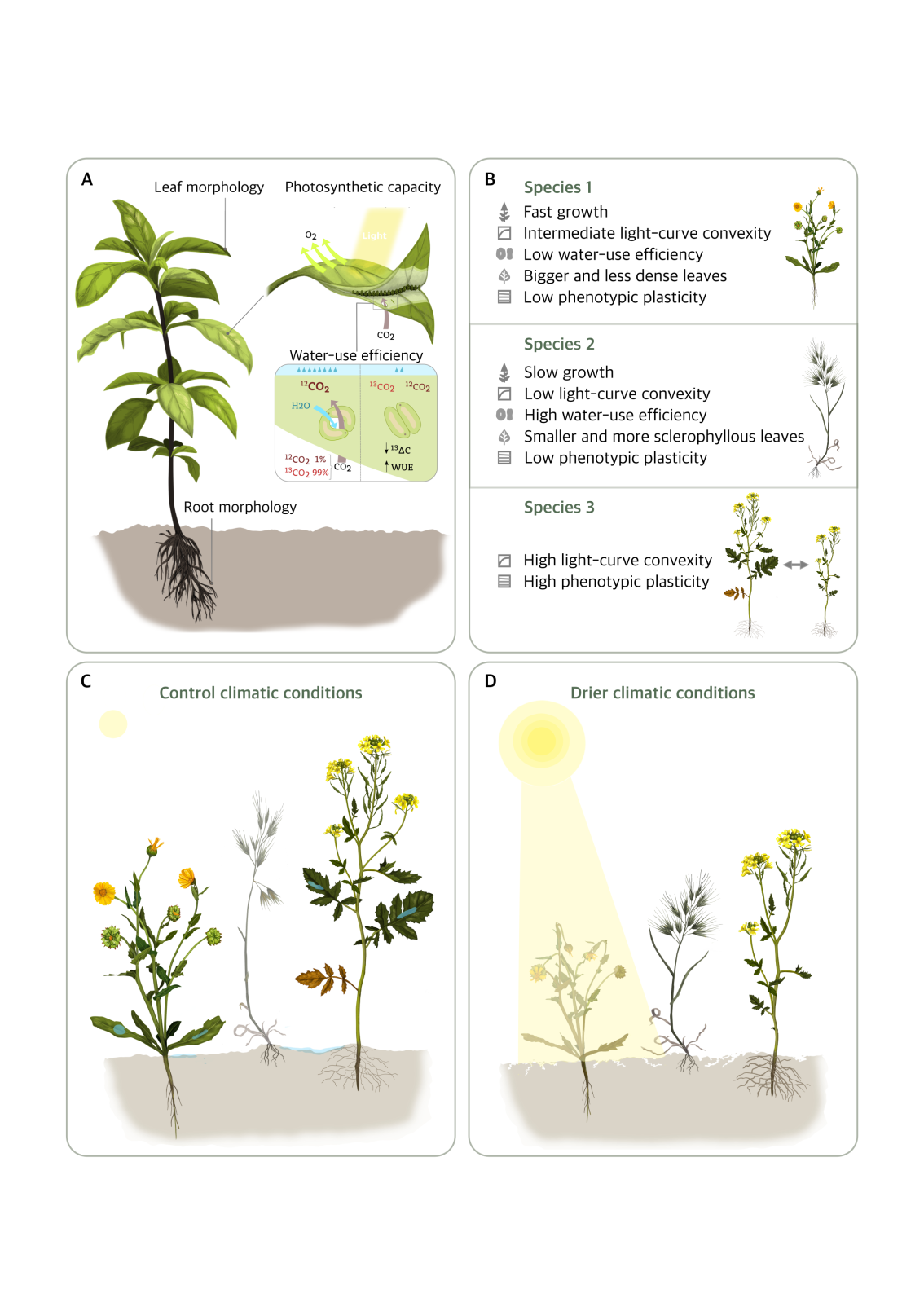A group of four researchers at the IRNAS (two of them recently moved to the Universities of Jaén and Cádiz), have combined theoretical advances in modern coexistence theory with experimental evaluation of species competition with the aim to increase our understanding on the functional mechanisms of community assembly under climate-induced shifts that might occur in the near future. For this purpose, they conducted a field-competition experiment with 10 annual plant species typical of Mediterranean grasslands and measured 19 functional traits related to plant physiology, morphology, phenology, and reproductive ability under two contrasting scenarios of water availability.
In previous studies, we demonstrated that drought induces clear differences in the competitive hierarchy between species (fitness differences) and modifies their abilities to exploit distinct niches (niche differences). In the present study, led by Ignacio Pérez-Ramos, we found clear evidences that fitness and niche differences are mainly attributed to the possession of some functional traits related to water-use and light-use efficiency as well as to interspecific differences in the degree of phenotypic plasticity. This is because variation in such traits enhances stabilizing niche differences and generates competitive trade-offs between species. Under control rainfall conditions, competitive superiority was positively correlated with those trait values maximizing plant growth (i.e. higher values of maximum photosynthesis and stomatal conductance). However, this wasteful resource-use typical of fast-growing species with acquisitive strategies was unfavorable under drought conditions, competitive superiority being mainly correlated with higher water use efficiency. Our findings suggest that drier conditions will reduce diversity and will shift community dominance towards functional profiles of slow-growing species with more sclerophyllous leaves, bigger seeds and a more efficient use of water (Fig. 1). Conversely, high-growing species with opposing traits (i.e. with a more exploitative strategy) will be potentially excluded from the community under more stressful conditions unless they exhibit phenotypic plasticity in such way that allow them to maintain fitness homeostasis and to reduce niche overlap with competitors in response to drought (Fig. 1).
This study has been published online in Nature Communications on 11/06/2019:
https://www.nature.com/articles/s41467-019-10453-0

Figure 1. Schematic diagram representing the role of some relevant functional traits as drivers of species coexistence under contrasting climatic conditions. We represent functional attributes related to different plant dimensions (photosynthetic capacity, water-use efficiency, root and leaf morphology; panel A). Assuming a simple community composed of three plant species with different functional strategies (panel B), the outcome of plant competitive interactions strongly changes as a function of climatic conditions (panels C and D). Paintings were created by “DharmaBeren Studio” (www.dharmaberen.com).
